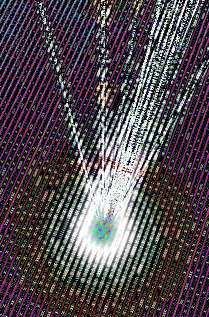Code closes quantum noise
 Code has been used for the first time to reduce quantum error in logic gates.
Code has been used for the first time to reduce quantum error in logic gates.
Scientists at the University of Sydney have demonstrated improvement in quantum computers by using codes designed to detect and discard errors in the logic gates of such machines.
“This is really the first time that the promised benefit for quantum logic gates from theory has been realised in an actual quantum machine,” said Dr Robin Harper, lead author of a new paper published in the journal Physical Review Letters.
Quantum logic gates are formed by entangled networks of a small number of quantum bits, or qubits. They are the switches that allow quantum computers to run algorithms to process information and perform calculations.
Dr Harper and his colleagues used IBM’s quantum computer to test error detection codes.
They demonstrated an order of magnitude improvement in reducing infidelity, or error rates, in quantum logic gates, the switches that will form the basis of fully functioning quantum computers.
Electronic ‘noise’ easily disrupts quantum states, quickly producing errors in quantum computations, which makes development of useful machines very difficult.
“One way to look at this is through the concept of entropy,” said researcher Professor Steven Flammia.
“All systems tend to disorder. In conventional computers, systems are refreshed easily and reset using DRAM and other methods, effectively dumping the entropy out of the system, allowing ordered computation.
“In quantum systems, effective reset methods to combat entropy are much harder to engineer. The codes we use are one way to dump this entropy from the system.”
Using codes to detect and discard errors on IBM’s quantum device, Dr Harper and Professor Flammia showed error rates dropping from 5.8 per cent to 0.60 per cent.
Rather than one in 20 quantum gates failing, just one in 200 would fail, an order of magnitude improvement.
“This is an important step forward to develop fault tolerance in quantum systems to allow them to scale up to meaningful devices,” Dr Harper said.
“[But] there is still a long way to go before the quantum community can demonstrate fault tolerant computing,” Dr Harper said.
The next step is to synthesise and test these approaches on larger-scale devices of a few dozen qubits that enable the reuse and reinitialisation of qubits.








 Print
Print